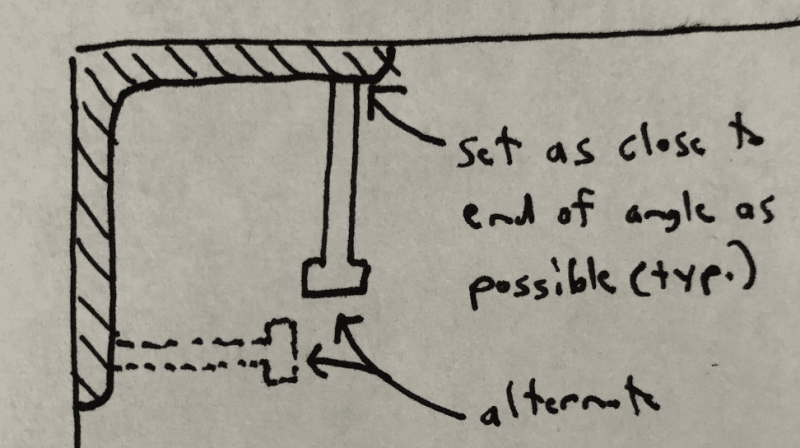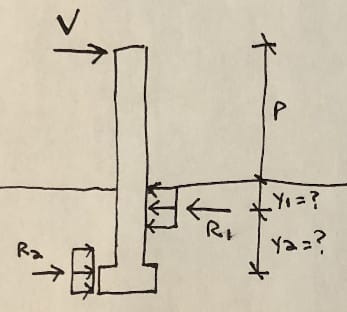The analysis assumes there is no concrete above the line connecting the sides of the tension failure surface, so it's as if the anchor is sticking above the concrete surface (about 5") with the load applied at the top. With the anchor projecting that much, it's close to failing in bending and deflects about 1/16", which I assume might cause the concrete at the top to crush/break off.
I've been thinking about this quite a bit over the last few days. I went to the bible of concrete anchors (i.e. 'Anchorage in Concrete Construction', by: Eligehausen, et al, published in 2006), and the failure of the concrete (for a single anchor with a cantilevered load) isn't covered. It is for
steel however (see p.107-109). In the intro to the section, they say: "
Flexural failure of the steel rod generally defines the capacity of such anchorages provided the distance to the edge of the component is sufficiently large."
One interesting thing this reference does is define the cantilever length....and it's longer than you'd think: it goes into the supporting concrete surface by about 0.5*the shank diameter.
So based on all this, probably the design approach for this situation would be:
1. Checking the steel capacity via the method talked about above....probably superimpose that utilization on top of the other code requirements for shear and tension.
2. Make sure you are embedded deep enough where pry out can't happen.
3. To get a warm/fuzzy feeling, check the anchors via some kind of acceptable stress distribution/embedment formula. In the thread linked to below (in my post @ 6 Sep 21 19:15), there is such a approach. It's meant for steel members in concrete....but it could probably work here.
4. As a back check for step #3, figure the couple (via the info in the link) and add that shear (closest to the surface) to the directly applied shears, and check as per allowable(s) in Chapter 17 of ACI 318 (i.e. concrete breakout and so on).




![[smile] [smile] [smile]](/data/assets/smilies/smile.gif) Considering this is unknown territory as far as the code goes.
Considering this is unknown territory as far as the code goes. 